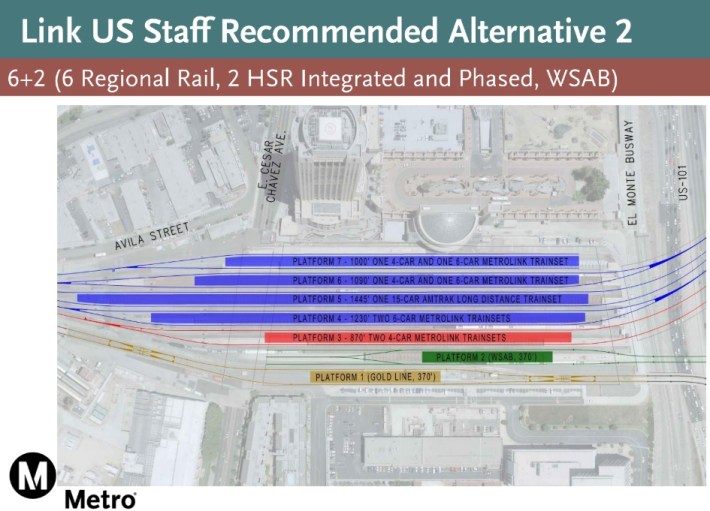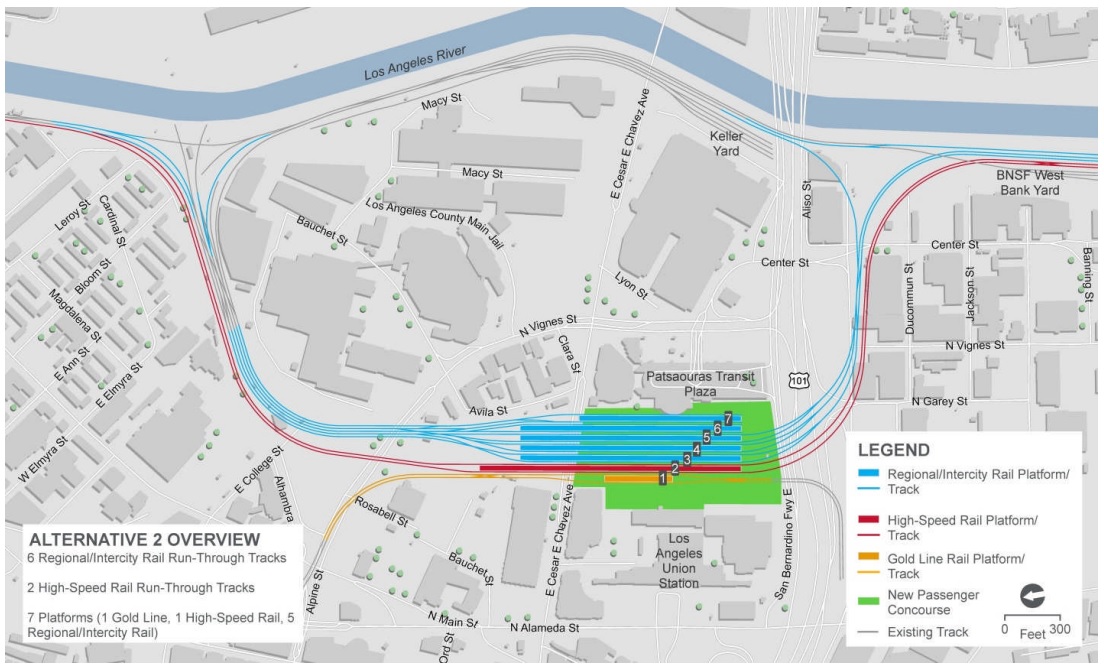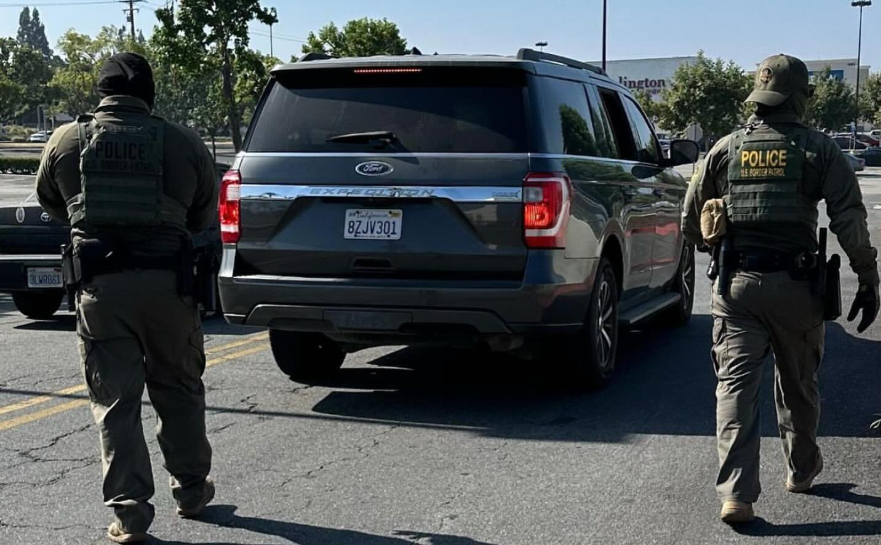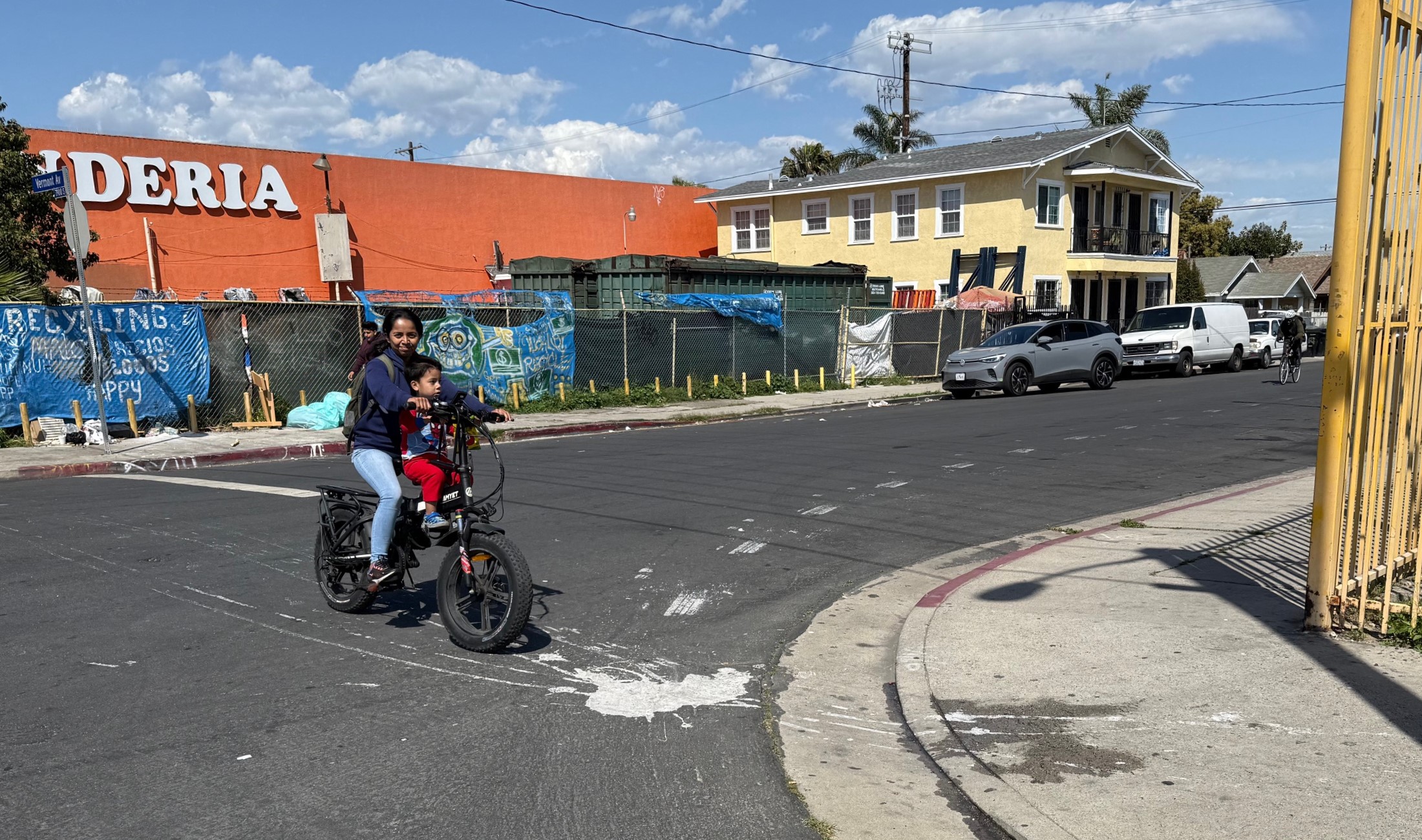At its monthly meeting today, Metro's board of directors approved moving forward with the "Link US" Union Station run-through tracks. The estimated $2.75 billion Link US project will add new loop tracks to extend Union Station’s existing stub-end tracks, resulting in decreased delays and increased station capacity. The project will also make Union Station compatible with future high-speed rail.
![Conceptual diagram for Union Station run-through tracks. Image via Metro staff presentation [PDF]](https://lede-admin.la.streetsblog.org/wp-content/uploads/sites/50/2017/02/UnionStationrunthroughoverview.jpg?w=710)
For full background on the Link US project, see SBLA's earlier coverage when the item was on the February board meeting agenda. At that meeting some boardmembers questioned where funding would come from, and questioned the viability of California high-speed rail. Then the board continued (postponed) the item for one month.
Today's Link US approval is actually a series of approvals:
- approve the recommended "6+2" alternative, with six local/regional rail tracks, and two tracks for high-speed rail
- approve $13.8 million in additional contract funding for HDR Engineering, Inc. engineering and environmental clearance work (plus an additional ten percent/$1.38 million in potential contingency funding)
- approve contracting with the California High Speed Rail Authority for $3.7 million to cover the high-speed rail portion of the work
- approve a $9.2 million increase in the fiscal year 2017 budget

As a result of interactions with the state of California and the California High-Speed Rail Authority, the recommended alternative actually changed since the item was considered in February. In February, Metro staff recommended a "6+4" alternative, which would have built four high-speed rail tracks. For today's vote, the staff recommendation shifted to the "6+2" alternative which includes only two high-speed rail tracks, and accommodates phasing in high-speed rail over time. With fewer high-speed rail tracks, Metro's planned West Santa Ana Branch rail project is expected to operate at the same level as the other tracks, instead of double-decked as was anticipated in the 6+4 alternative.
The funding for actually building the project is not clear. So far funding has come from Measure R and CHSRA. Metro staff reports that they are "exploring" getting funding from Metrolink and Amtrak, officially via their overarching agencies: Southern California Regional Rail Authority (SCRRA) and Los Angeles - San Diego - San Luis Obispo (LOSSAN) Rail Corridor Agency. Potential additional funding could come from Federal Railroad Administration (FRA), Federal Transit Administration (FTA), and/or state cap-and-trade funds via CAHSRA and/or the Transit and Intercity Rail Capital Program (TIRCP) grants.
To quell board fears about high-speed rail viability, Metro staff reported that the phased approach includes plenty of "offramps" where high-speed rail could be jettisoned from the project. CAHSRA is paying for the high-speed rail share of the design and construction costs. Further, from the staff report: "all the HSR project components in Link US are being designed with independent utility so that when complete all tracks and infrastructure can be fully utilized by Metrolink, Pacific Surfliner, and Amtrak until HSR reaches LAUS. If HSR plans do not move forward, and Metro chooses to change the scope of the project because the CHSRA plans are not advancing, CHSRA will be responsible for actual costs incurred including without limitation any and all costs due in connection with reducing the scope items added to accommodate HSR."
(Article updated 3/27 with additional visuals from Metro March 2016 staff presentation.)







